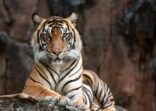Furthermore, market experts largely believe Asian markets are now prepared to withstand investor reaction to a rate hike, unlike some markets in 2013, when the expectation of an end to quantitative easing resulted in massive capital outflows.
With this as the backdrop, we take a look at the BlackRock Global Funds Asian Tiger Bond and Eastspring Investment Asian Bond, which are both focused on Asian fixed income.
Launched in 1996, the BlackRock fund with $714m in assets under management has a longer track record than the larger Eastspring fund ($2.26bn in assets), which was incepted in 2005.
Seow Shin Horng, head of product management and development at Bank of China offers his insights on these two funds.
Investment strategy review
The BlackRock Asian Tiger Bond Fund seeks to invest at least 70% of its assets in the fixed income securities of issuers domiciled in, or exercising the predominant part of their economic activity in, Asian Tiger countries.
As of 30 September, the fund portfolio reflects highest allocation to China with 29.5% weighting followed by India and Hong Kong which accounts for 14.3% and 12.5% of the portfolio, respectively.
Indonesia, the Philippines, Korea, Singapore, Malaysia, Thailand and Sri Lanka are its other country exposures.
It can invest in a full spectrum of available securities, including non-investment grade. The currency exposure of the fund is also flexibly managed.
“The BlackRock fund has 30% flexibility to make off-benchmark [JP Morgan Asia Credit Index], non-Asian bets. Eastspring does not have the flexibility to do that,” Seow said.
The Eastspring Asian Bond Fund invests in debt securities issued by Asian entities or their subsidiaries that are rated as well as unrated.
As of September-end, Eastspring fund’s top country picks were China, Hong Kong and Indonesia with 28.3%, 13.9% and 11.6% weighting, respectively.
“Although the BlackRock fund invests primarily into US dollar bonds, there are active overweights/underweights in other Asian currencies.”
These include CNH [Chinese renminbi traded in Hong Kong], the Malaysian ringgit, the Singapore dollar and the Japanese yen.
In addition, BGF has short positions in its bond and cash holdings. Eastspring uses a long only strategy, he said.
Other than having the ability to short and making off-benchmark bets, BGF allocates a higher proportion of the portfolio into corporate issues, noted Seow.
According to him, the BlackRock fund has deployed about 84% of its assets in corporate bonds compared to the Eastspring fund, which invested 79% of its assets in corporate bonds. Eastspring allocates a higher proportion of the portfolio into government issues (17.1% compared to 9.2% of the BlackRock fund).
The September-end factsheet of the BlackRock fund shows a 40.2% weighting in BBB-rated issuances, followed by 13.5% in BB-rated and 10% in B-rated instruments.
The Eastspring fund, in comparison, has the highest (13.8%) weighting in BBB-minus papers, followed by 11.1% in BBB-rated ones and 10% in bonds with an A+ rating.
The top 10 holdings in the BlackRock fund comprise 15.8% of the total portfolio while the Eastspring fund’s top 10 holding have a 6.3% weighting.
Performance review

The BlackRock fund outperforms the Eastspring fund over one-, three- and five-year investment horizons.
For the one-year period until 30 October, the BlackRock fund registered an 8.1% return compared to the 6.1% return of the Eastspring fund.
Over the three- and five-year periods, the BlackRock fund recorded returns of 6% and 7.1% and Eastspring returned 5.2% and 5.8%.
“Even if you consider the volatility of the two funds, BGF fared better than Eastspring. BGF’s sharpe ratio is 3.3 while Eastspring’s sharpe ratio is 3.14. BGF has a four star rating from Morningstar while Eastspring has a three star rating.”
“The BlackRock fund will underperform in a risk-off environment and when the US dollar is depreciating. Eastspring will underperform in a risk-on environment.”
Conversely, he said the BlackRock fund will outperform in a risk-on environment and the dollar is appreciating. Eastspring will outperform in a risk-off environment.
Portfolio Managers
Joel Kim and Neeraj Seth have been managing the BlackRock fund since 2012. Kim is the head of Asia Pacific fixed income at Blackrock, responsible for the firm’s fixed income portfolio management group in the region. Seth is head of Asian credit, fundamental fixed income.

David Lai, investment director with the fixed income team at Eastspring Investments Singapore, has been managing the firm’s Asian bond fund since March 2009. Lai has 19 years of investment experience.

Fees

The BlackRock fund levies management fees of 1%. The management fees charged by the Eastspring fund on share class A, B and C are 1.25%, 0.625% and 0.5% respectively, while it is nil on share classes D and E.
The total expense ratio for the BlackRock fund for the year ended August 2013 is 1.22%. According to FE analytics, the TER of the Eastspring fund is 1.75% for the year ended September 2013.
The BlackRock fund has a higher maximum front-load fee (5%) than Eastspring (3%).
Conclusion

“If considering the two funds as stand-alone options, I would choose the BlackRock fund for its performance and lower fees.
“However, if I have to choose between the two funds for an allocation to a diversified portfolio, I will choose Eastspring as a `pure’ Asian Bond Fund with reasonable returns.”


![Eastspring Asia sustainable bond product available in Hong Kong rong-ren-goh–846×790[1]](https://s34456.pcdn.co/wp-content/uploads/2020/10/rong-ren-goh-846x7901-1-156x111.jpg.optimal.jpg)












